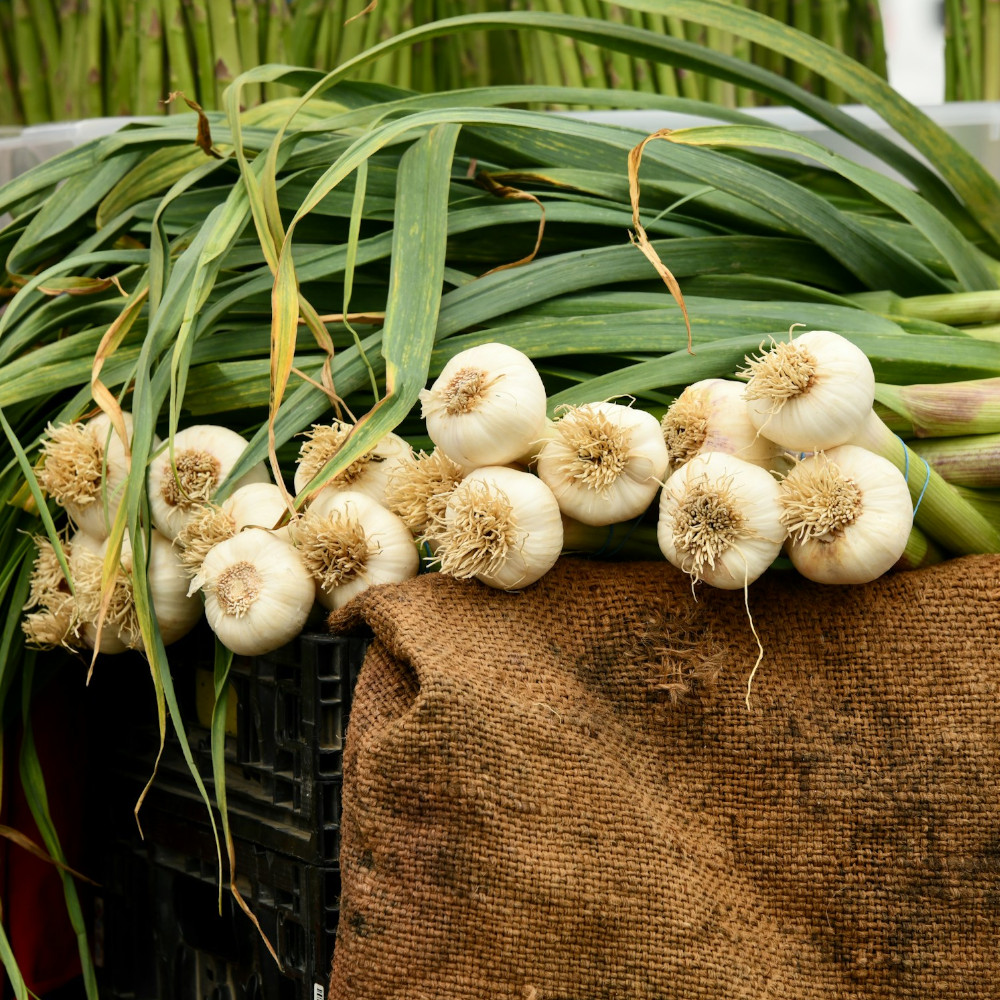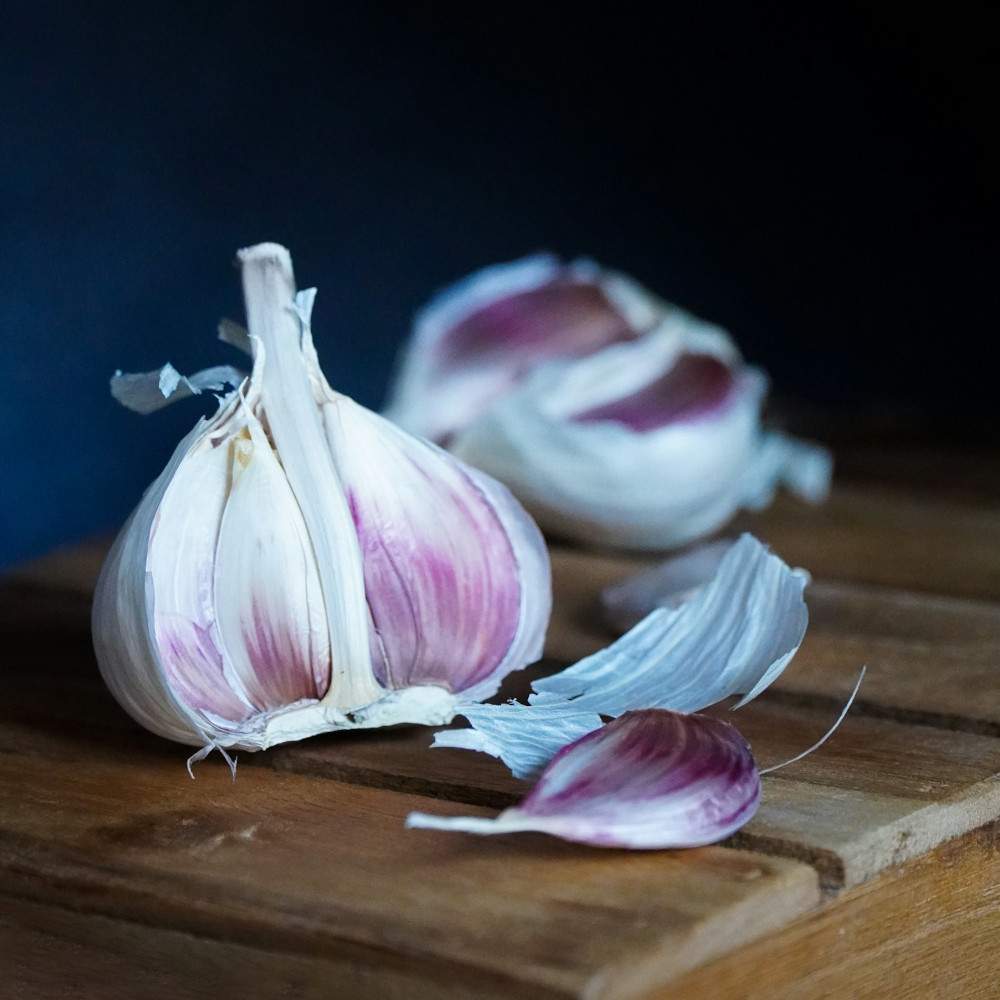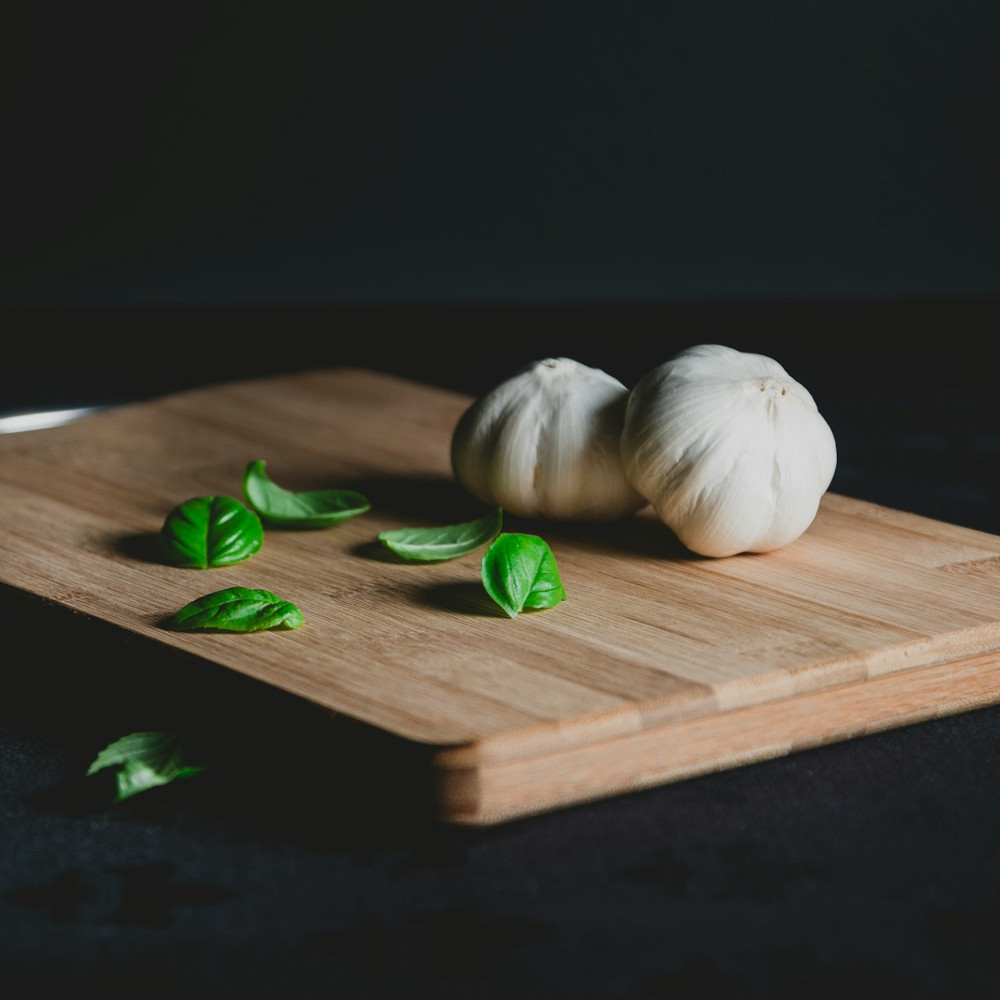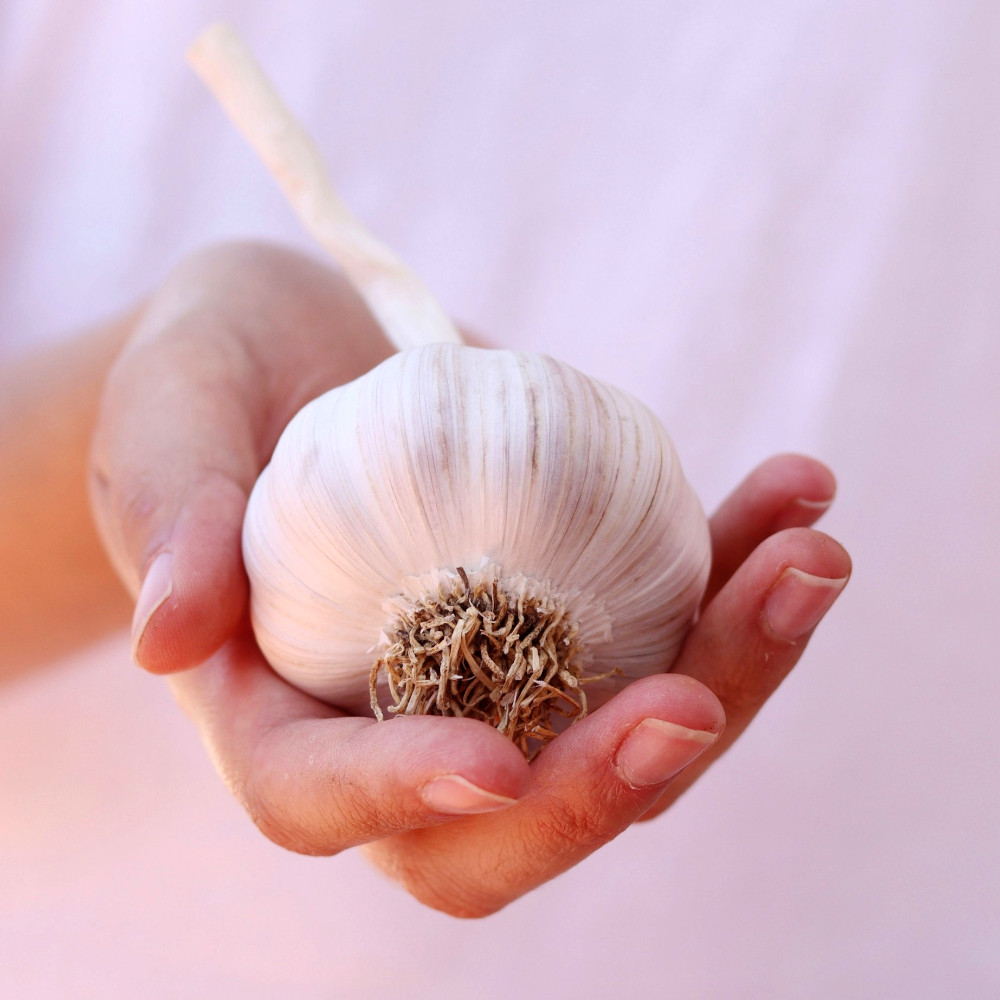
MEDIPLANT | Garlic (Allium sativum): Nature’s Potent Healer and Culinary Treasure
Introduction:
Garlic, scientifically known as Allium sativum, is a species in the onion genus Allium. Revered for its pungent aroma, distinct flavor, and potent medicinal properties, garlic has been cherished for millennia in culinary traditions and natural medicine systems worldwide. In this comprehensive guide, we delve into the botanical characteristics, health benefits, therapeutic uses, and chemical composition of garlic.
Botanical Description:
Garlic is a bulbous plant characterized by its underground bulb composed of multiple cloves enclosed in a papery sheath. Each clove is a modified leaf with a distinct aroma and flavor. The plant produces tall, slender stems with flat leaves and spherical flower clusters. Garlic is cultivated globally in temperate climates and thrives in well-drained, fertile soil.
Chemical Composition:
Garlic owes its therapeutic properties to its rich array of bioactive compounds, including:
- Allicin: Allicin is a sulfur-containing compound formed when garlic cloves are crushed or chopped. It is responsible for garlic’s characteristic odor and possesses potent antimicrobial, antioxidant, and anti-inflammatory properties. Allicin is a key contributor to garlic’s medicinal benefits.
- Sulfur Compounds: Garlic contains various sulfur compounds, such as diallyl sulfide, diallyl disulfide, and diallyl trisulfide, which exhibit antibacterial, antifungal, and antiviral activities. These sulfur compounds contribute to garlic’s immune-boosting and disease-fighting properties.
- Organosulfur Compounds: Garlic is rich in organosulfur compounds like ajoene, alliin, and allyl methyl sulfide, which have been studied for their potential in preventing cardiovascular disease, reducing blood pressure, and inhibiting tumor growth. These compounds play a crucial role in garlic’s therapeutic effects.
- Flavonoids: Garlic contains flavonoids, such as quercetin and kaempferol, which possess antioxidant and anti-inflammatory properties. Flavonoids contribute to garlic’s ability to neutralize free radicals, reduce inflammation, and support cardiovascular health.
Health Benefits:
Garlic offers a myriad of health benefits, including:
- Immune Support: Garlic exhibits immune-modulating properties, enhancing the body’s natural defense mechanisms against infections and diseases. Regular consumption of garlic may help reduce the risk of colds, flu, and other respiratory infections.
- Cardiovascular Health: Garlic is renowned for its cardiovascular benefits, including lowering blood pressure, reducing cholesterol levels, and preventing the formation of blood clots. It helps improve circulation, reduce inflammation in the arteries, and support overall heart health.
- Antimicrobial Activity: The antimicrobial properties of garlic make it effective against a wide range of pathogens, including bacteria, viruses, fungi, and parasites. It can help combat infections, promote wound healing, and support gastrointestinal health.
- Anti-inflammatory Effects: Garlic contains compounds that possess anti-inflammatory properties, which may help alleviate pain and inflammation associated with arthritis, allergies, and other inflammatory conditions.
- Antioxidant Protection: Garlic is rich in antioxidants, which help neutralize free radicals and protect cells from oxidative damage. Antioxidants play a crucial role in reducing the risk of chronic diseases and slowing down the aging process.
- Digestive Support: Garlic stimulates digestion, promotes the secretion of digestive enzymes, and supports gastrointestinal health. It can help alleviate digestive discomfort, bloating, and gas.
Therapeutic Uses:
Garlic is utilized in various forms for therapeutic purposes, including:
- Raw Garlic: Consuming raw garlic cloves or incorporating them into culinary dishes provides the most potent therapeutic benefits. Raw garlic is commonly used to boost immunity, support cardiovascular health, and combat infections.
- Garlic Supplements: Garlic supplements, available in capsule, tablet, or extract form, offer a convenient way to incorporate garlic into one’s daily regimen. They are used for their immune-boosting, cardiovascular, and antimicrobial properties.
- Garlic Oil: Garlic-infused oil is applied topically to the skin to promote wound healing, alleviate fungal infections, and soothe insect bites. It can also be used as a natural remedy for ear infections.
- Aged Garlic Extract: Aged garlic extract is a specialized form of garlic that undergoes a fermentation process, resulting in enhanced bioavailability and reduced odor. It is used to support cardiovascular health, reduce inflammation, and boost immunity.
Ailments and Conditions Benefited by Garlic:
Garlic has been traditionally used to alleviate or manage a wide range of ailments and conditions, including:
- High Blood Pressure (Hypertension): Garlic has been shown to lower blood pressure by relaxing blood vessels and improving circulation. Regular consumption of garlic may help reduce the risk of hypertension and associated complications.
- High Cholesterol: Garlic supplementation has been found to decrease total cholesterol and LDL (bad) cholesterol levels while increasing HDL (good) cholesterol levels. It may help improve lipid profiles and reduce the risk of cardiovascular disease.
- Respiratory Infections: Garlic possesses antimicrobial and immune-boosting properties that make it effective against respiratory infections like colds, flu, bronchitis, and sinusitis. It can help alleviate symptoms and reduce the duration and severity of infections.
- Digestive Disorders: Garlic stimulates digestion, relieves gastrointestinal discomfort, and promotes gut health. It may be beneficial for individuals experiencing indigestion, bloating, gas, or stomach ulcers.
- Arthritis and Joint Pain: The anti-inflammatory properties of garlic may help reduce pain and inflammation associated with arthritis and other inflammatory joint conditions. Regular consumption of garlic may alleviate symptoms and improve joint function.
- Diabetes Management: Garlic has been studied for its potential in improving insulin sensitivity, lowering blood sugar levels, and reducing complications associated with diabetes. It may help regulate blood glucose levels and support overall metabolic health.
Culinary Uses:
Garlic is a versatile ingredient in culinary traditions worldwide, adding depth of flavor and nutritional value to a wide range of dishes, including:
- Sauces and Marinades: Garlic is commonly used to flavor sauces, marinades, and dressings for meats, poultry, seafood, and vegetables. It enhances the taste and aroma of savory dishes while imparting its health-promoting properties.
- Soups and Stews: Garlic adds richness and complexity to soups, stews, and broths, infusing them with its distinctive flavor and aroma. It complements a variety of ingredients and enhances the overall culinary experience.
- Stir-Fries and Sautés: Garlic is a staple in stir-fries and sautéed dishes, providing depth of flavor and aroma to vegetables, meats, tofu, and noodles. It is often paired with ginger and other spices for a harmonious blend of flavors.
- Roasted and Grilled Dishes: Roasted or grilled garlic cloves become caramelized and mellow in flavor, adding sweetness and complexity to meats, vegetables, and bread. Roasted garlic can be spread on toast or mashed into sauces for a deliciously rich taste.
- Breads and Pastas: Garlic is a classic ingredient in breads, pastas, and pizza dough, imparting its signature flavor and aroma to baked goods. It can be minced, grated, or crushed and incorporated into dough for a delightful garlic-infused taste.
Precautions and Considerations:
While garlic is generally safe for most individuals when consumed in culinary amounts, excessive intake or supplementation may cause gastrointestinal discomfort, heartburn, or allergic reactions in some people. Garlic may interact with certain medications, including blood thinners, so consult with a healthcare professional before starting any garlic supplementation regimen, especially if you have underlying health conditions or are taking medications.
Conclusion:
In conclusion, garlic (Allium sativum) stands as a testament to nature’s healing power and culinary artistry. Its remarkable array of bioactive compounds, including allicin, sulfur compounds, organosulfur compounds, and flavonoids, contribute to its diverse health benefits and therapeutic uses. From supporting cardiovascular health and boosting immunity to combating infections and alleviating inflammation, garlic offers a wealth of potential for enhancing overall well-being. Whether consumed raw, cooked, or in supplemental form, embracing the therapeutic potential of garlic can enrich both health and culinary experiences alike. As we continue to explore the multifaceted properties of garlic, we reaffirm its status as a true superfood and indispensable ally in the journey toward optimal health and vitality.
For the images used, we thank: Daniela, Karolina Kołodziejczak, Shelley Pauls, Vitor Monthay on Unsplash



